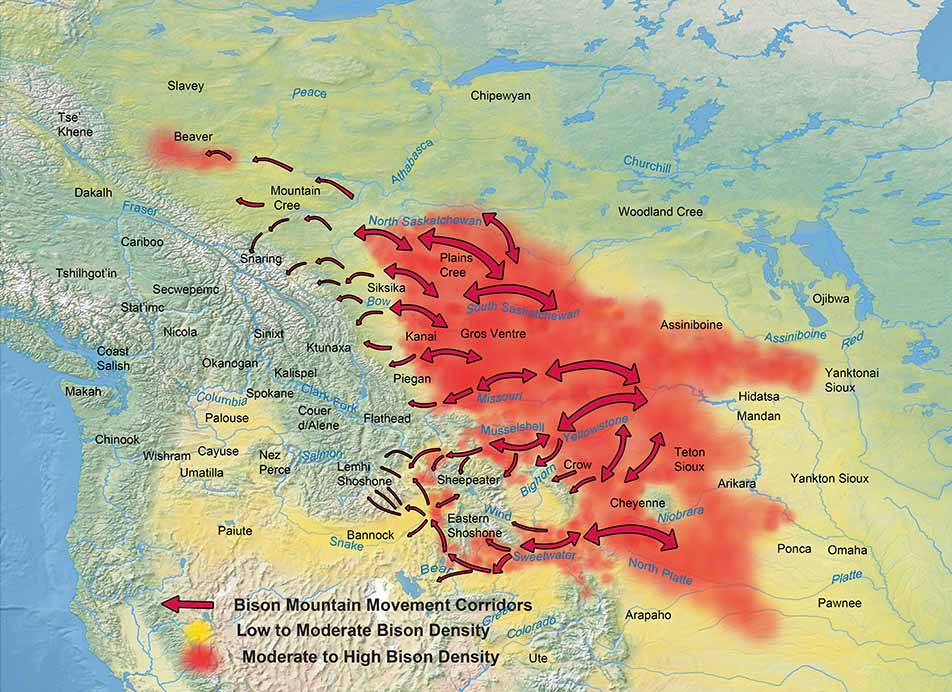The most recent version of the report is 2018-10-25.
Report Summary
Based upon historic literature, bison movement from the North American plains into northern section of the Western Cordillera is conceptualized as a 3-phase dispersal process consisting of: 1) an annual migratory pattern of large numbers of bison from the central plains towards the mountains and foothills each fall and winter, and back on the plains in the spring and summer: 2) dispersal events westward through corridors into the mountains that occurred generally when bison were most numerous at the edge of the Cordillera (fall and winter); 3) the persistence or demise of small herds that penetrated the mountains due to interactions with human predation, terrain, forest cover, and snowpack conditions. This conceptual model is tested using data from first person journal accounts of wildlife observations, wallow densities (in northern regions), and terrain and historic vegetation conditions along potential bison movement corridors into the Cordillera.
Preliminary analysis of this data suggests that bison’s movement pattern into the mountains varies for by 3 broad regions:
Montane Valleys- Movement routes on to the upper Snake River (South Pass) and upper Missouri (Bozeman Pass) where open grass-shrub vegetation and wide corridors (particularly South Pass) allowed large herds to move over 1000 km into the mountains from the plains;
Mountain Wall– The region from the Great Falls of the Missouri north to the Bow River where relatively open terrain, but very narrow corridors into the mountains resulted in highly effective communal hunting by native Americans, and bison rarely reached >10 km into the mountains;
Forested Foothills and Boreal Plains– A broad region north of the Bow River, reaching to the boreal plains where dense forest cover resulted in low densities of bison that were difficult to hunt, and small herds reached 50-150 km into the mountains (e.g. , over Howse Pass) and >1000 km northwards into the boreal forest (Peace-Athabasca-Slave river areas).
These historical bison movement patterns could be mathematically evaluated using biophysical and cultural co-variates with least cost and friction models.
